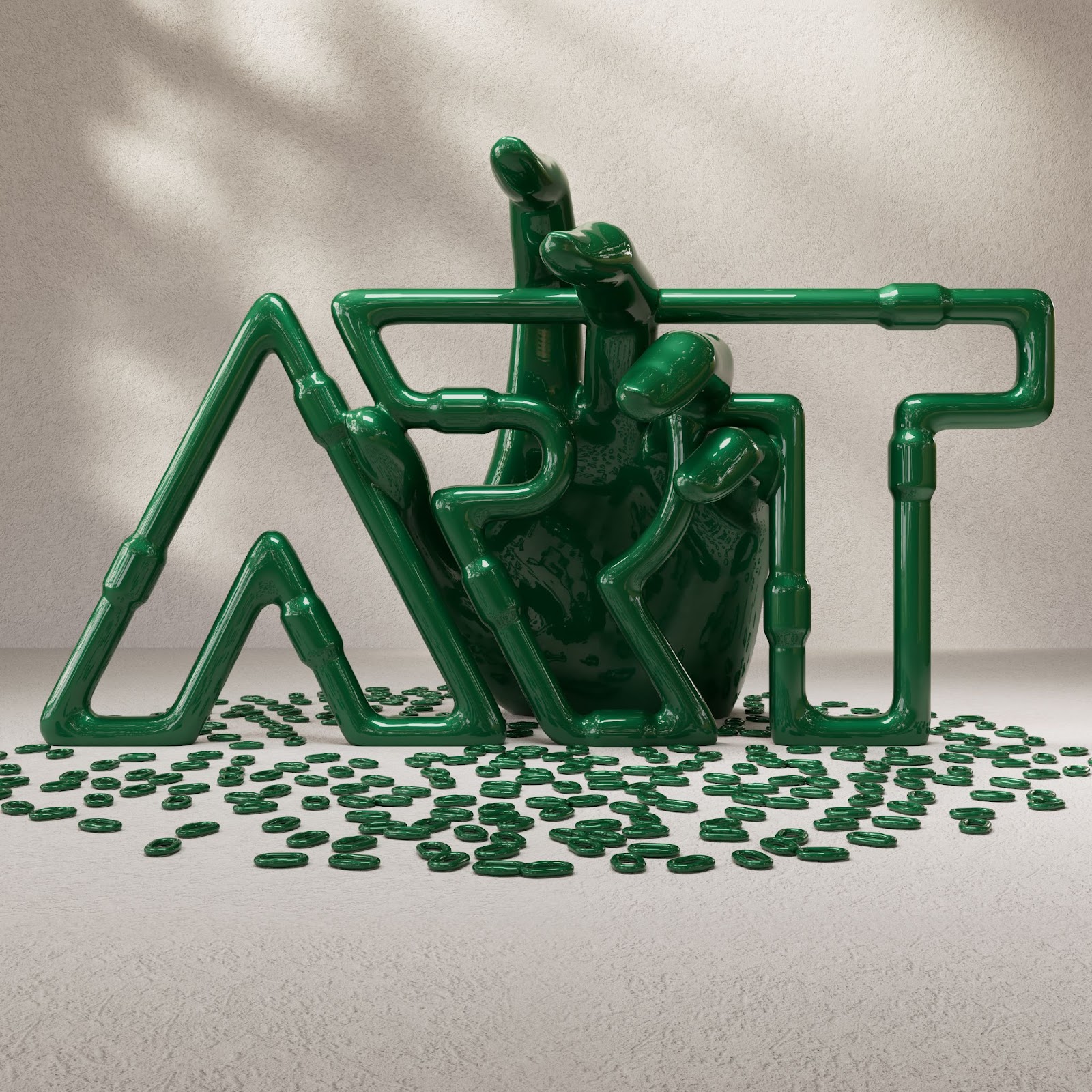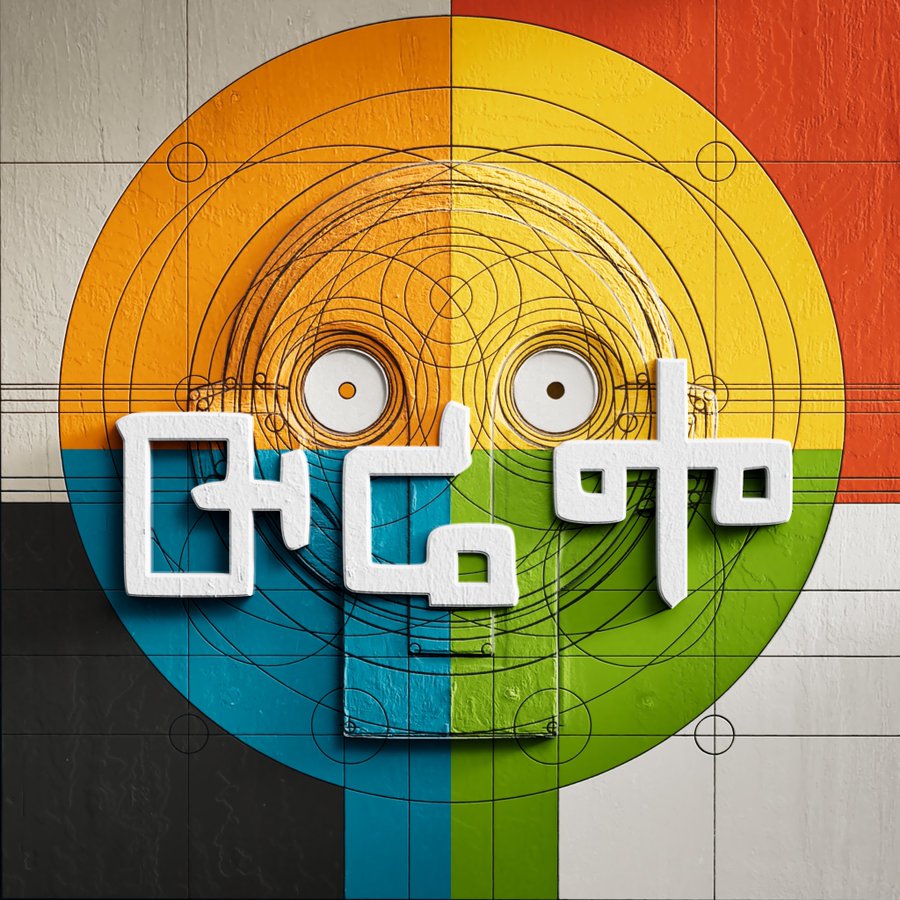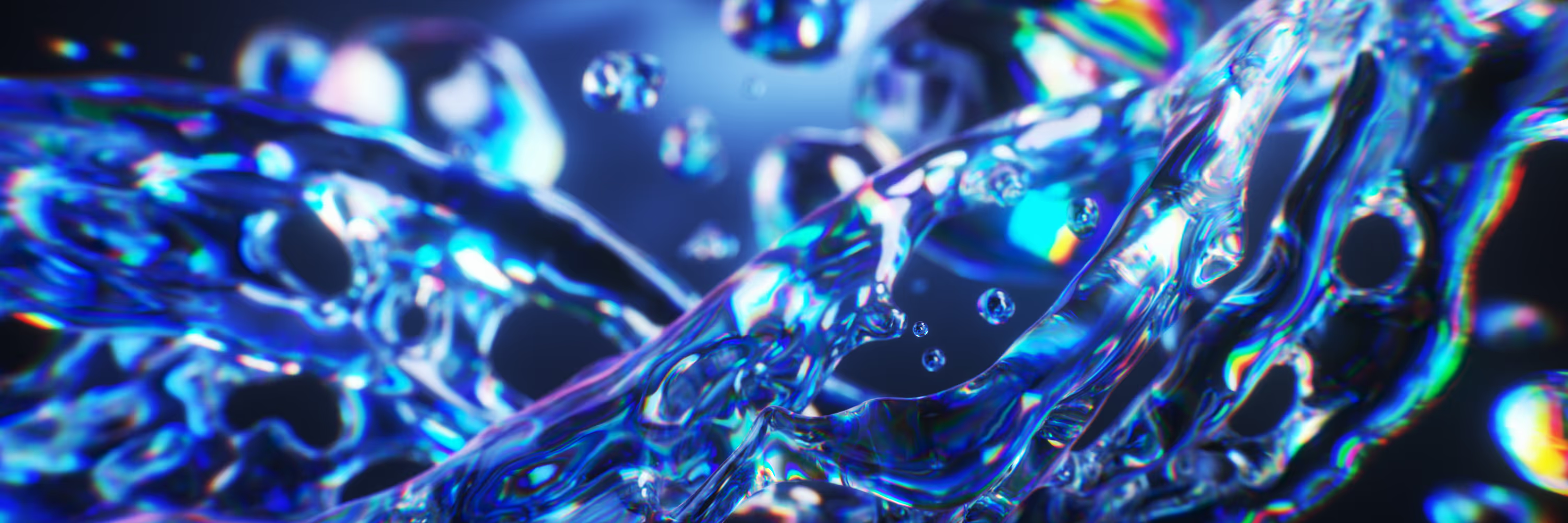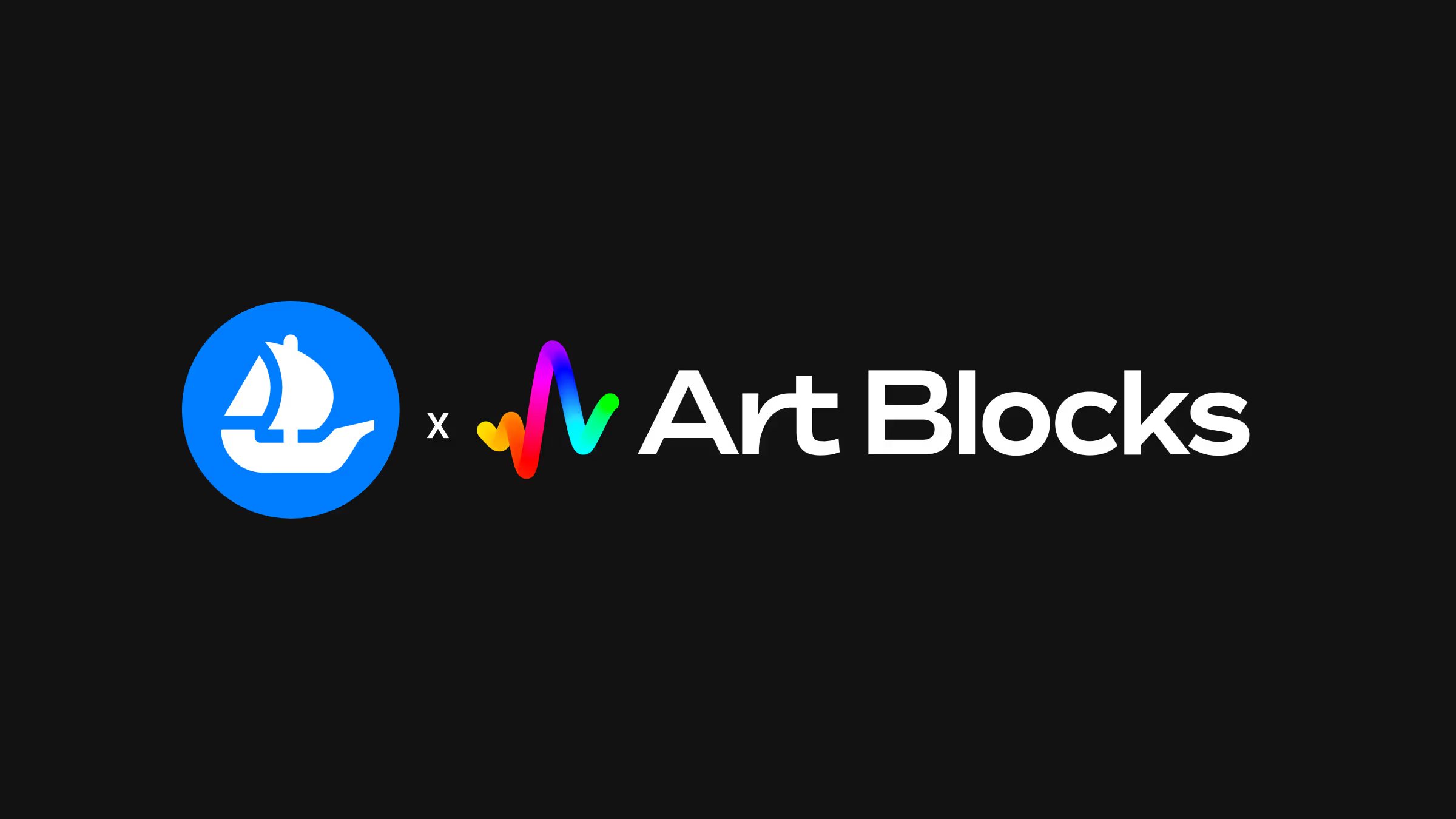Few individuals in the web3 art space wear as many hats as Roger Dickerman. A former trader and wellness entrepreneur, Roger entered the NFT world in 2020 and quickly became a trusted voice among artists and collectors alike. Through his work as a curator, founder of the NFT Origin Stories interview series, and creator of 24 Hours of Art, he’s helped chart the rise of digital art while building infrastructure to support its future.
We caught up with Roger to talk about his journey into web3, the artist-first ethos that guides his work, and how 24 Hours of Art has evolved from a daily snapshot into a cornerstone for community, curation, and cultural record-keeping. Along the way, he shares insight into trends he’s watching, the value of editorial storytelling, and why 2026 might be his most ambitious year yet.
Note: This interview was edited for length and clarity

OpenSea: Let’s kick things off. Your path into web3 and digital art started as a global trader, then moved through the wellness industry before landing in NFTs. Can you walk us through that arc and what catalyzed your leap into digital art?
Roger Dickerman: It all started with conviction in cryptocurrency. I became a believer in 2016 and had some skin in the game by 2018 and 2019. Then 2020 hit, the world shifted with COVID, and the wellness business my wife and I had been running in Philadelphia disappeared almost overnight. We had been thinking about moving on, maybe even selling it—but suddenly it was just gone.
I transitioned into corporate wellness for a bit, and around that same time I discovered the acronym NFT. At first, it was just a trading vehicle. I heard buzz about Nifty Gateway in mid-2020, started researching the digital art market, and by that fall, I was in. Initially, I approached it purely as an asset trader.
But within weeks, I found myself drawn more to the artwork than the assets. I was trading, but I didn’t want to let go of certain pieces. I began immersing myself in the space—artists reached out with questions, and I found myself offering insight on pricing, supply, and collector behavior. It became an unexpected crash course in digital art.
In 2021, I decided to lean into the media side. When artists launched on platforms like Nifty Gateway, they’d get a short paragraph about their background—but I always wanted more. Where were they really coming from?
So I’d dig into their websites, portfolios, past media, film, illustration—anything I could find. I’d stitch it together into [Twitter] threads. No one else seemed to be doing this kind of context work.
I launched a show called NFT Origin Stories alongside artist parrott and started interviewing artists one-on-one.
OpenSea: I remember Origin Stories. It’s actually how I first became familiar with you! Even though you started as a trader, people mostly know you as a collector and curator. Was there a specific moment or project that made you realize digital art was your next calling?
Roger Dickerman: It happened pretty quickly after launching the interview series. I just knew I wanted to be here. It felt obvious. The world was going digital. Maybe not overnight, but the shift felt inevitable.
The tipping point for me was the friendships I formed with artists. That changed everything. Since then, I’ve always said I’m artist-first. It might sound cliché, but I truly believe artists are pushing the tech forward. They’re the tip of the spear when it comes to adoption. They make it interesting. They take risks. They’re just great people to be around.
Through that lens, I launched Artifex, a collaboration between myself, an artist and art director named DurkatWork (a digital sculptor), and a small production team. Artists like ThankYouX, Coldie, and Alotta Money would create one-of-one works, and our role was to extract the central object from the canvas and transform it into a 3D digital sculpture.
We’d auction the one-of-one artwork alongside editions of the sculpture, which were designed for use across mixed reality, metaverses—anywhere you wanted to take it.
OpenSea: Totally–the concept behind Artifex is a strong example of the blend between art and technology. Since you mentioned NFT Origin Stories, were there any conversations that helped you understand the evolution of digital art or where it’s heading?
Roger Dickerman: One of the earliest and most meaningful was episode four—with the late Alotta Money. He was the first OG crypto artist I really connected with. He became a friend and, honestly, a Sherpa. He helped me understand what came before.
I know your question is about where things are going, but for me, it had to start with the past. What shaped this space?
He was relentless in his experimentation—obsessed with crypto, culture, 3D avatars, AI, metaverse construction. He was even a Voxels architect. He was always getting his hands in everything. Watching someone like that helped me see what doors were opening next. And truthfully, the things he was exploring then? I think they’re still where this space is headed.
OpenSea: That’s such a great point. Sometimes looking back is the best way to understand where things are headed. 24 Hours of Art has become a daily touchstone for the community. Can you walk us through how it started and evolved?
Roger Dickerman: In 2023, the space went through a major gut check. From an art-first perspective, it was brutal. Valuations collapsed. Everything fell apart. And I had to ask myself: if I’m running an art production company, how do I stay in the space full-time?
It became a phase of experimentation. Just like early on with artist content, I looked around and realized no one was reporting on art in a consistent, daily, unbiased way. Everything felt hype-centric or bag-biased.
I remember reading the first Mando Minutes—a TL;DR of everything happening across crypto—and thinking, “I want this, but for art.”
So the next day, I started building it. I’d already been tracking the space internally for years. I put out a mini research report. It wasn’t what it is now, but the response was strong. People said, “Finally, something that gives art its own lane.” That gave me confidence to keep going.
It grew fast—five days a week, then six. Eventually, I knew I had to make it sustainable. That became the next chapter.
OpenSea: Would you say 24 Hours of Art has a definitive purpose? I think of it as a historical archive of the digital art market.
Roger Dickerman: That’s definitely part of it. It’s the foundation—a clean, accurate snapshot of what happened. People sometimes ask, “Why sales figures?” And while no metric is perfect, they’re the least biased. They’re not about my collection or my friends. It’s about what actually happened, and what moves the industry forward.
But where we’re heading is even more exciting. I want to create an annual report—something like the Art Basel Contemporary Art Report—but for digital art. Those reports view digital art as small and dedicate a proportional section to it. And that's fine. I believe what we're building here is more powerful than it's being given credit for, and it will only grow. And that’s fine. But I believe what we’re building is more powerful than it’s been given credit for.
An annual report could help people make sense of this space—digital art collectors, crypto-native folks, even people adjacent to traditional art. 24 Hours of Art is a step toward that. The annual would be a leap.
OpenSea: Even though it’s data-focused, is there room for editorial voice?
Roger Dickerman: Definitely. Each day, I aim to highlight a few headlines or moments. Sometimes it's obvious—like a major sale. Other times, it’s a quieter story that reflects the culture or creative momentum.
The core report is as objective as I can make it. But then there’s the subscriber report—that includes every line item, and at the end, I include a short editorial note. Sometimes it’s quick. Sometimes I go deep. It’s a space to explore meaning, momentum, or market signals a bit more personally.
OpenSea: What does your daily process look like? How long does each report take?
Roger Dickerman: It starts the day before. I loosely monitor socials, private chats, and less-visible platforms. If I spot something interesting—especially if it’s not showing up in aggregator data—I drop it into a drafts folder.
I’m up between 4 and 5 a.m. to compile everything from aggregators, marketplaces, artist bots, and private channels—anything that offers signals others might miss. I’m tracking what happened and what’s coming next.
All in all, on a normal day when I’m not traveling, it takes about four hours.
OpenSea: Switching gears—can we talk about the Transient Labs collaboration for the onchain token project? It was 366 tokens, right?
Roger Dickerman: Yep. This is the fun part—24 Hours of Art has legs now, and I’m fully committed to building it as a forever brand.
At the end of 2023, I decided I needed to turn it into a sustainable business. That’s where Transient Labs came in. We released tokens for every day of 2024—a leap year, so 366 tokens. They were sold at 0.24 ETH each and marked the beginning of the 24 Hours of Art Collective.
Buyers were randomly assigned a day—say you got May 20, 2024. You’d follow along all year until your day arrives, then see what happened in the market that day. We wanted to instill a sense of anticipation.
Each token also featured original artwork by Justin Wetch, who I’ve worked with since Artifex. He creates daily cover images for each report—full 3D Houdini-built scenes, not AI-generated. I pull out the key highlights, and Justin builds the visual. The result becomes the token’s “cover” and a visual archive of the day.
At the end of 2023, we also released 24 honorary tokens and then launched into the 366-token run, which became the foundation for the Collective. We have a private Telegram, a weekly “This Week in Art” show, and we’ve done in-person gatherings like a brunch in New York. It’s a tight-knit, art-centric group.
For 2025, the question became: how do we keep growing without losing the magic? I didn’t want to double the size of the Collective—it changes the group dynamic. So instead, we introduced a lower-tier subscription token: a dynamic, daily-changing token that features that day’s cover art and gives access to the full newsletter via email or a token-gated site.
We’ve done 217 updates so far this year. Each token becomes a kind of time capsule—on January 7, 2030, you’ll see what happened on January 7, 2025.

OpenSea: That’s cool. And what about the one-of-one art designs—how do those work?
Roger Dickerman: We launched a patron program for 2025 with 24 people who stepped up to play a more active role. Many share the vision of producing a definitive annual report for the space.
As patrons, they each get to curate one of the 24 one-of-one daily art designs for the year. For example, Sam Spratt has already chosen his. Jack Butcher is a patron too. Let’s say he sees an art design he loves on September 12—he can claim that one, as long as no one else already has. That design becomes permanently tied to his token and one of the 24 in the main collection.
OpenSea: So each patron curates just one artwork across the whole year?
Roger Dickerman: That’s right. We’ve had eight curated so far - Kanbas, Justin Aversano, Krybharat, Sam Spratt, Ekaitza, Snowfro, Batsoupyum, Seedphrase, and Blondie. It’s a really strong group.
Here’s a fun one: one patron slot was still open. I’d been talking to someone, but it hadn’t been finalized. Then, one day in the Telegram chat, someone posted, “Put the kettle on. The boss is here.” I opened the message, and XCOPY had bought that last patron token—completely unprompted. I’d interviewed him before, but this was a surprise.
That was one of those moments where I just stopped and thought, “Okay, I need to keep going.” He told me, “I’ve been meaning to do this for a while.” When someone like XCOPY joins, it’s clear we’re on the right track. We’re building something meaningful.
OpenSea: That’s amazing. I didn’t realize there was such a layered approach for 2025. Are you already thinking about 2026?
Roger Dickerman: I am. I try to build in public—it’s kind of the only way in web3. You’ve got to be clear on who you are and keep walking forward.
We're on an internal heater. We know where we are going and what it will take to get there as a growth engine for digital art.
A new home, the Annual Report, and creatively fostering the core community that lifts up 24 Hours of Art each day are high on the list. It's an honor tearing after that alongside Justin Wetch, advisor Niftytime, Transient Labs, and partners like SuperRare and Gondi.
OpenSea: Before we end this interview, I have a collector-focused question. As someone deeply immersed in this space, are there any emerging trends or artists you’re especially excited about?
Roger Dickerman: In terms of trends, I’m always drawn to artists on the rise—those who combine strong art with strong communication. It’s usually both. Artists who are great at creating but also know how to engage with the community tend to stand out.
A few months ago, I started calling out the “Three M’s”: Modest, mendezmendez, and MaNiC. Each had a unique combination of art and communication that made them ready to take a leap forward. And I think they’ve all done that now.
Right now, that artist is Gavin Meeler. He reminds me of where those three were a few months ago. He’s been quietly creating for a while. A core group of collectors has discovered him and started speaking up. And he’s responding to that—not just continuing as usual, but feeding off the momentum. That kind of positive feedback loop—artist gets support, artist pushes harder—that’s powerful. He recently released a small one-of-69 collection called Lunatics that sold out on Ninfa, and those moments can be big tipping points.
OpenSea: All amazing artists! Thank you so much for your time Roger, this has been great.
Roger Dickerman: Thanks, Hannah.
Note: The mention of a token is for informational purposes only nor is it intended as financial or investment advice.




.avif)

.png)

.png)
.png)
.png)
.png)
.avif)